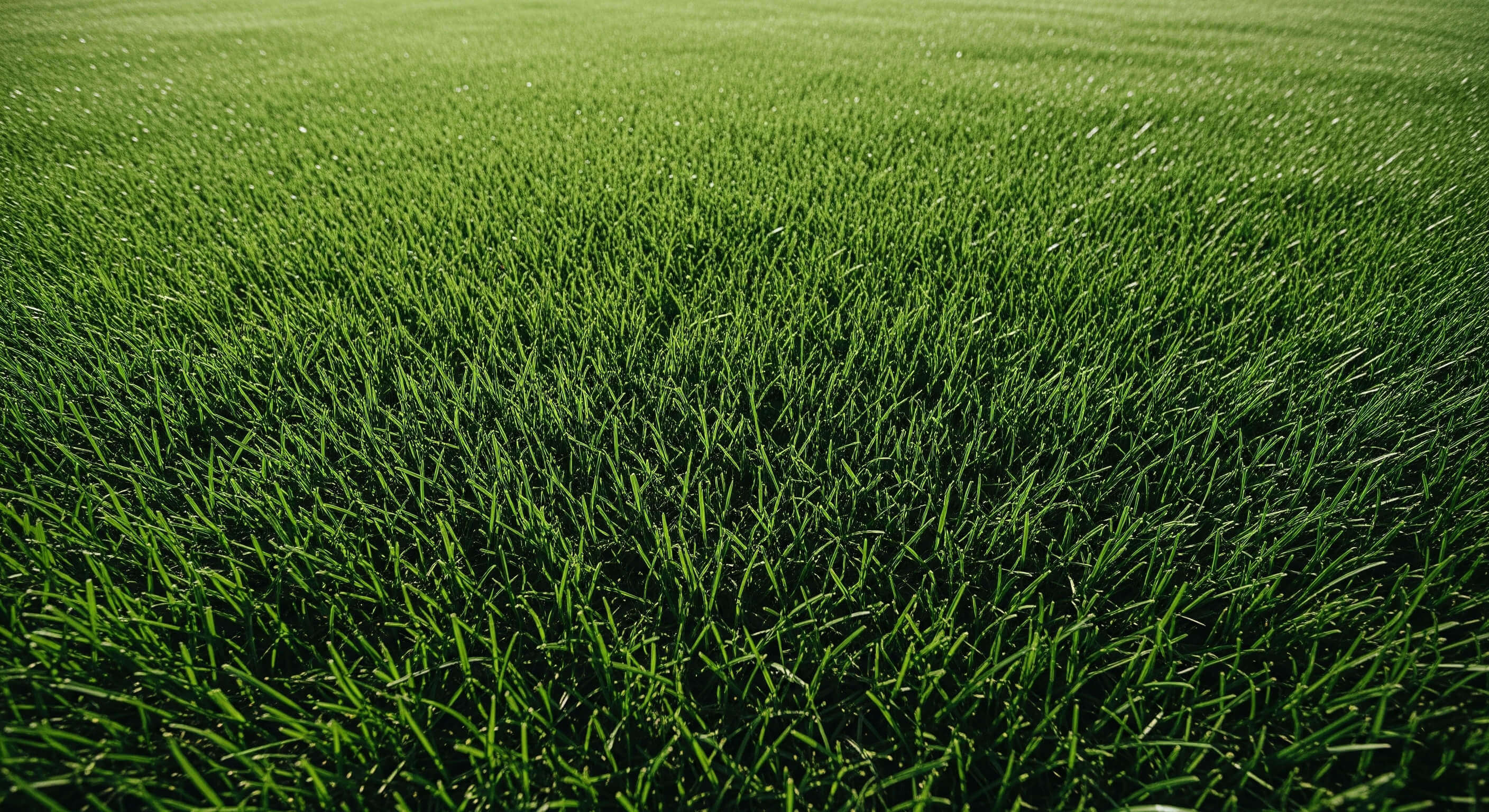
St. Augustine
Higher maintenance, better traffic tolerance
Eremochloa ophiuroides
They call it "lazy man's grass" for good reason. Centipede grass requires less mowing, less fertilizer, and less water than almost any other warm-season lawn grass. Originally from China and Southeast Asia, this grass has become a southern favorite for homeowners who want a decent lawn without the constant upkeep.
But here's the catch - Centipede's low-maintenance reputation comes with some trade-offs. It’s not suitable for high-traffic areas or sports fields. It won't give you that golf-course look. What it will provide is a decent, apple-green lawn that doesn't demand your weekends.
The biggest mistake with Centipede? Trying too hard. This grass actually performs worse with excessive fertilization. Too much nitrogen causes decline, not improvement. Stick to 1-2 pounds of nitrogen per 1,000 square feet annually - that's it.
Set your mower at 1.5 to 2 inches and leave it. Centipede grass grows slowly, so you should mow every 10 to 14 days during peak season. Some homeowners mow even less often. The grass naturally stays fairly even in height.
Centipede has moderate drought tolerance. It needs about 1 inch of water weekly but can survive on less. During drought, it goes dormant quickly but also recovers rapidly when rain returns. Deep, infrequent watering works better than daily sprinkles.
Look for these distinctive characteristics:
The medium-green color, often called apple-green, is your first clue. It is noticeably lighter than St. Augustine or Bermuda grass. The leaves are fairly short, usually 2 to 3 inches, with a boat-shaped tip that stands out when examined closely.
Centipede spreads by stolons (above-ground runners) only - no rhizomes. These stolons have a compressed appearance with short internodes, giving them a "centipede-like" look that inspired the name. The stolons root at nodes, creating new plants.
The seed heads, when present, look like single spikes on short stems. They're less noticeable than Bermuda grass seed heads and don't detract much from the lawn's appearance.
USDA zones 7b-10 are ideal. Centipede grass tolerates heat well but has limited cold resistance. Temperatures below 5°F in winter can cause serious damage. It is especially popular in the southeastern coastal plain where winters are milder.
This is where Centipede excels - it thrives in acidic soils (pH 5.0-6.0) that other grasses find challenging. Sandy, well-draining soils are ideal. Heavy clay can work if drainage is sufficient. Avoid alkaline soils, which lead to iron chlorosis (yellowing).
Full sun to partial shade works, but it performs best with 6 or more hours of direct sunlight. In shadier areas, the turf becomes thin and more prone to problems. Has better shade tolerance than Bermuda but less than St. Augustine.
A mysterious condition where grass gradually dies in expanding patches. It is often caused by excessive fertilization, improper pH, or thatch buildup. Prevention is easier than cure - start with proper cultural practices.
Yellowing caused by iron deficiency, common in alkaline soils. Use iron sulfate or chelated iron for quick greening. A long-term fix involves lowering soil pH with sulfur applications.
Microscopic worms that damage roots, leading to yellowing and thinning. More problematic in sandy soils. No easy cure—maintain grass health to reduce impact.
Scale insects that attach to roots cause irregular yellow patches. They are very difficult to control. Maintaining optimal growing conditions helps the grass tolerate damage.
Most economical but slowest. Use 0.25-0.5 pounds per 1,000 sq ft. Germination takes 14-28 days. Full establishment takes 2-3 years. Best planted in late spring or early summer.
Instant lawn but it's the most expensive. It establishes in 2-3 weeks with proper care. Avoid laying sod during peak summer heat or late fall.
Middle ground option: Space plugs 6-12 inches apart for complete coverage in 1-2 growing seasons. More economical than sod, faster than seed.
Wait until the lawn is fully green before the first mowing. Apply pre-emergent herbicide to control crabgrass. Test soil pH and make adjustments if necessary. Fertilize lightly only if the grass looks pale.
Peak growing season, but avoid heavy fertilization. Monitor for insects and diseases. Keep mowing height consistent. Water during prolonged dry spells.
Continue mowing until dormancy. Avoid late fertilization, which reduces cold hardiness. Control winter weeds with appropriate herbicides. Overseed thin areas if needed.
Minimal maintenance during dormancy. Clear leaves to prevent disease. Avoid heavy traffic on dormant turf. Plan next year's maintenance schedule.
Initial establishment costs vary widely—seed ($50-100 per 1,000 sq ft), plugs ($200-400), or sod ($400-800). However, the real savings come later. Annual maintenance costs are 30-50% less than Bermuda or St. Augustine because of reduced mowing, fertilizing, and pesticide needs.